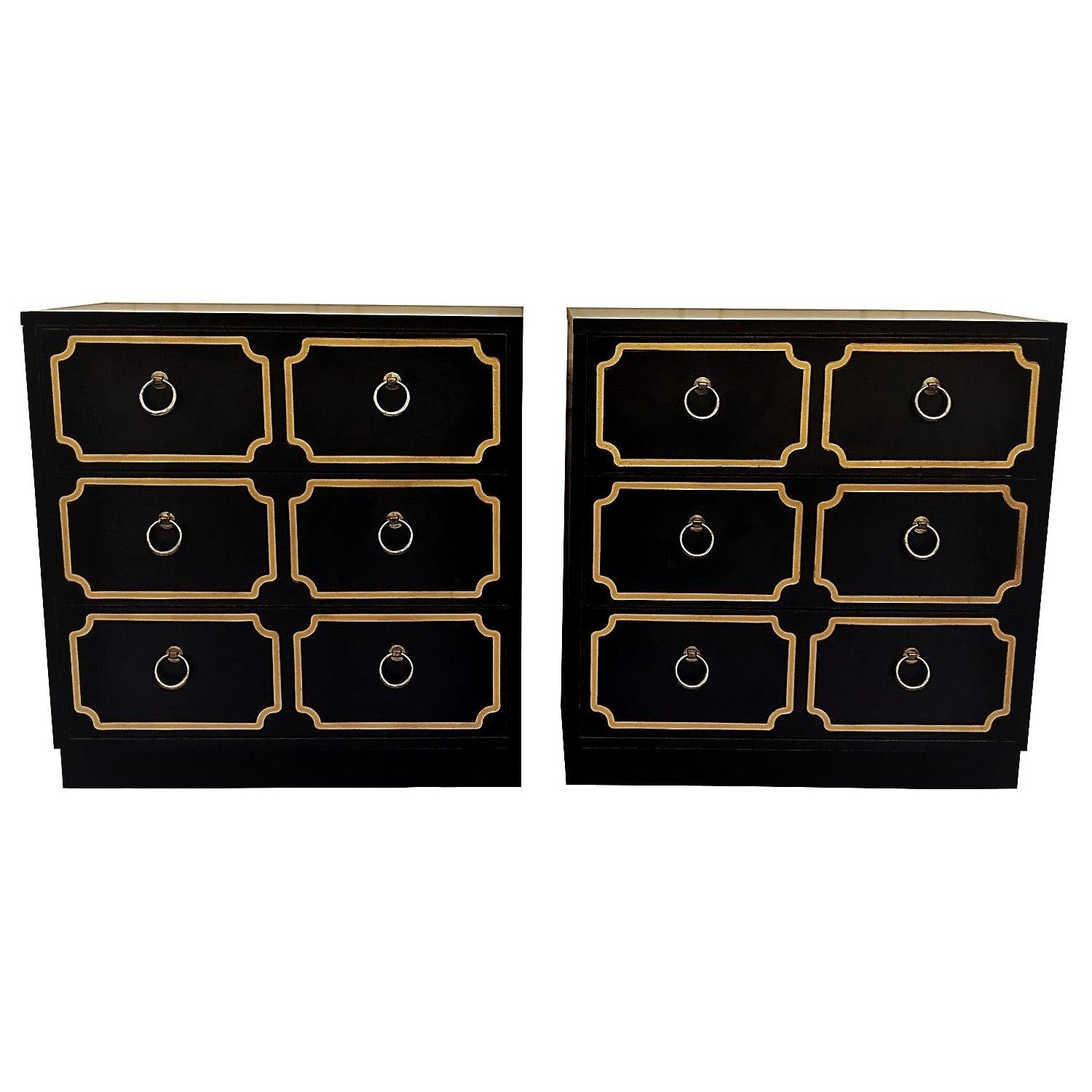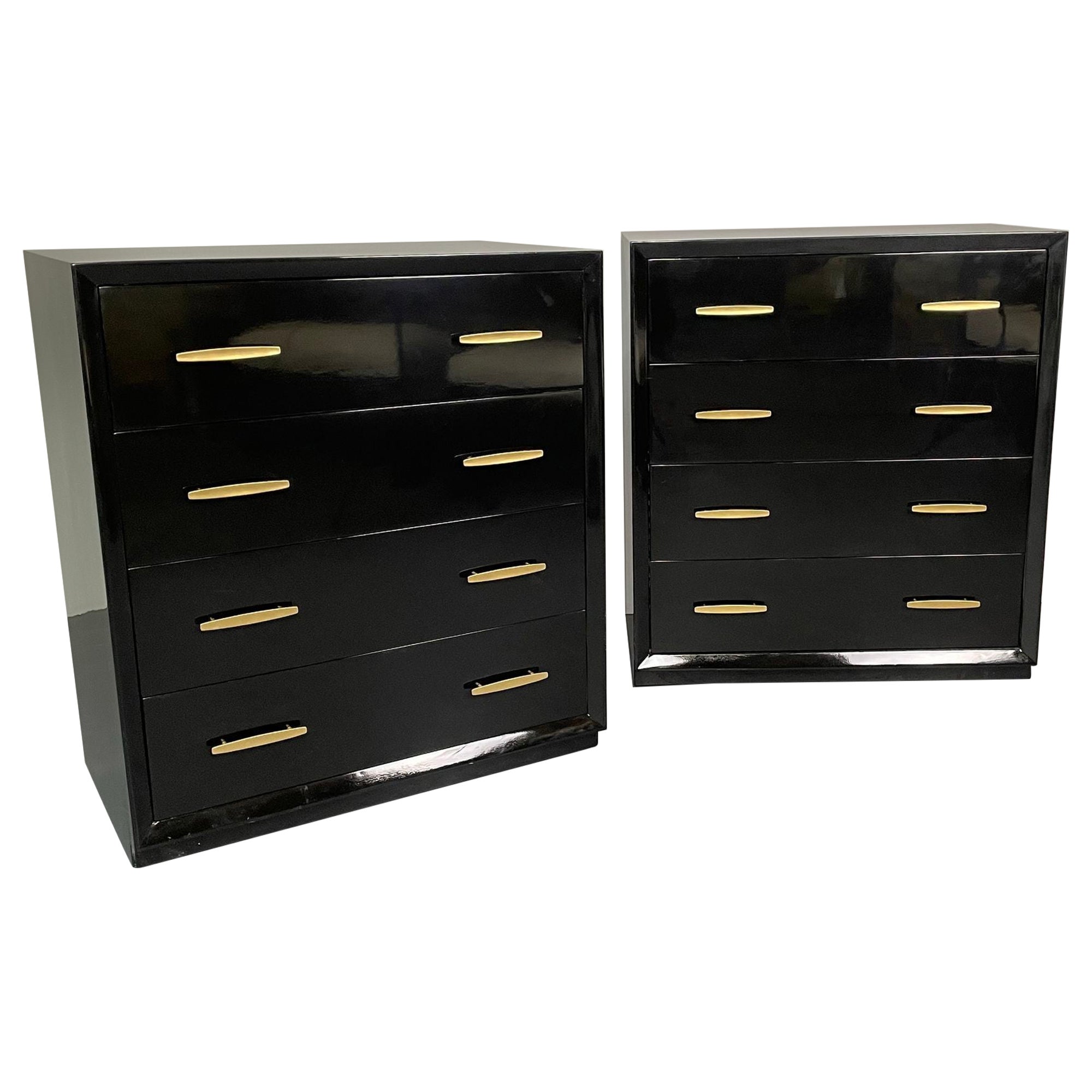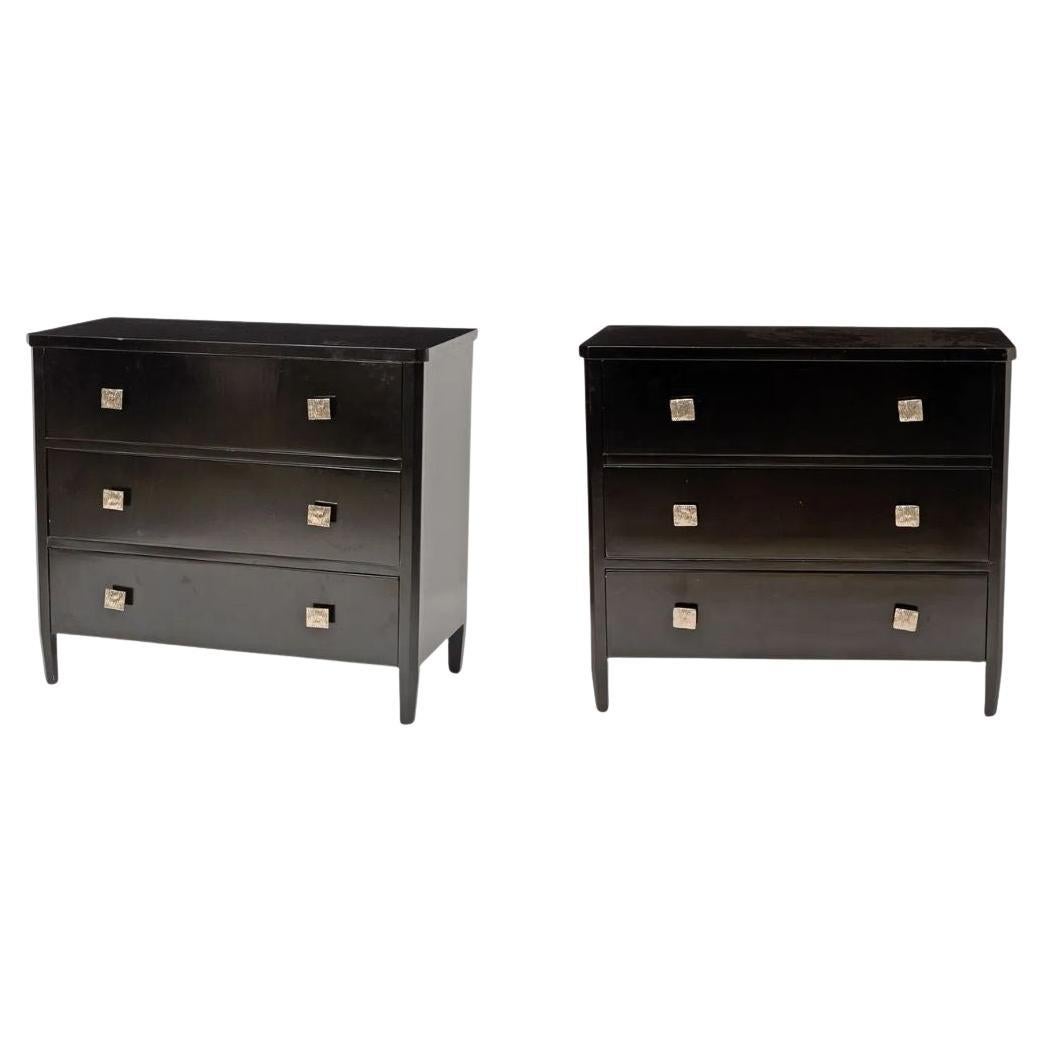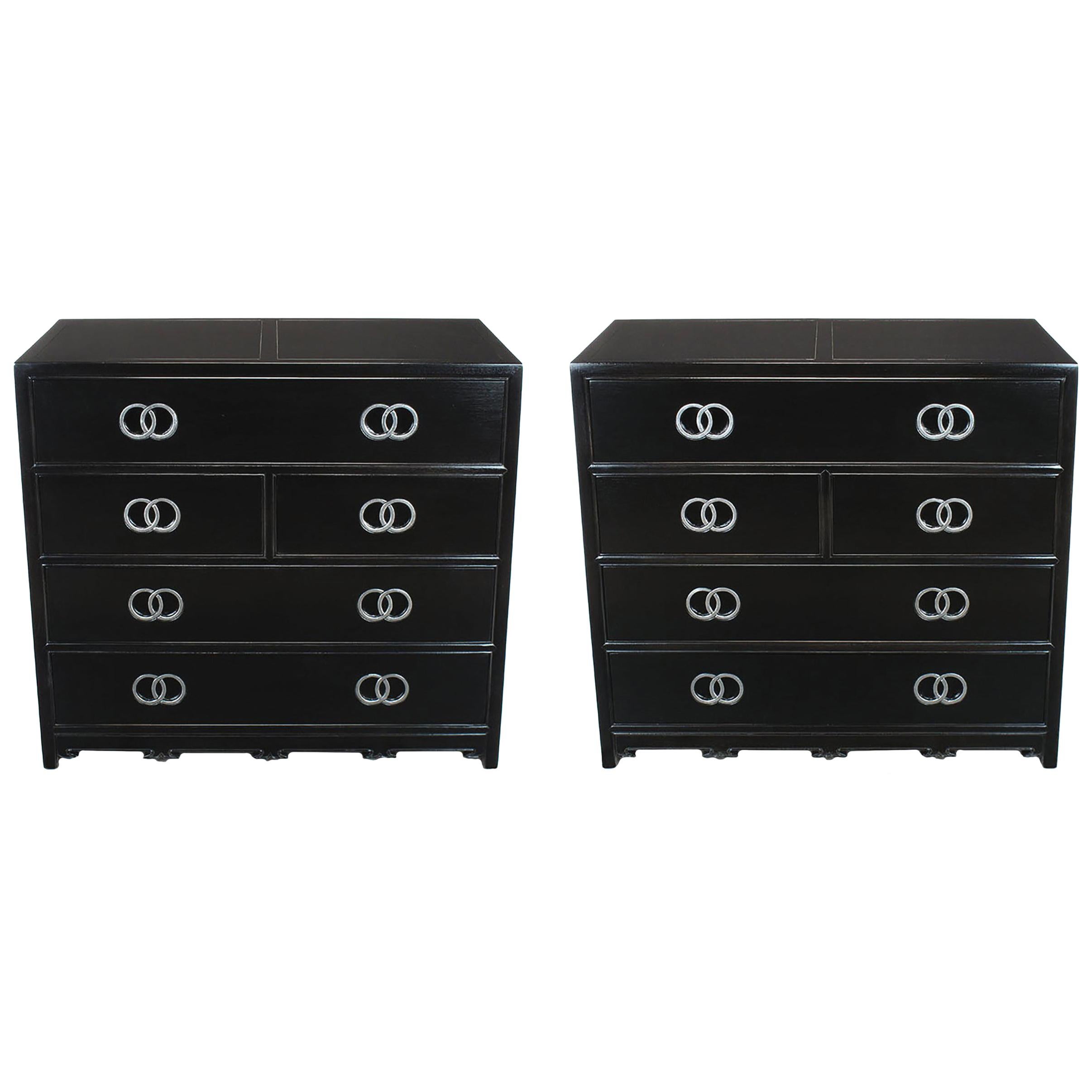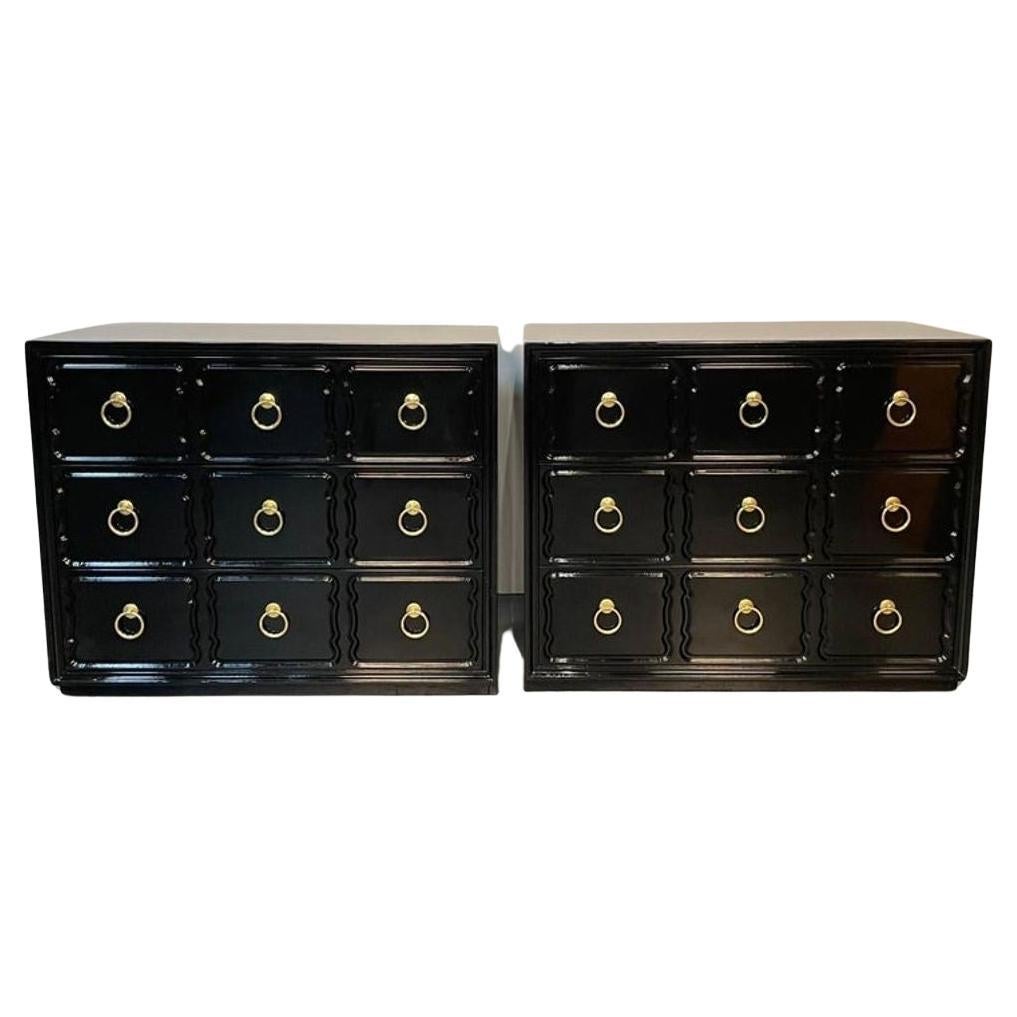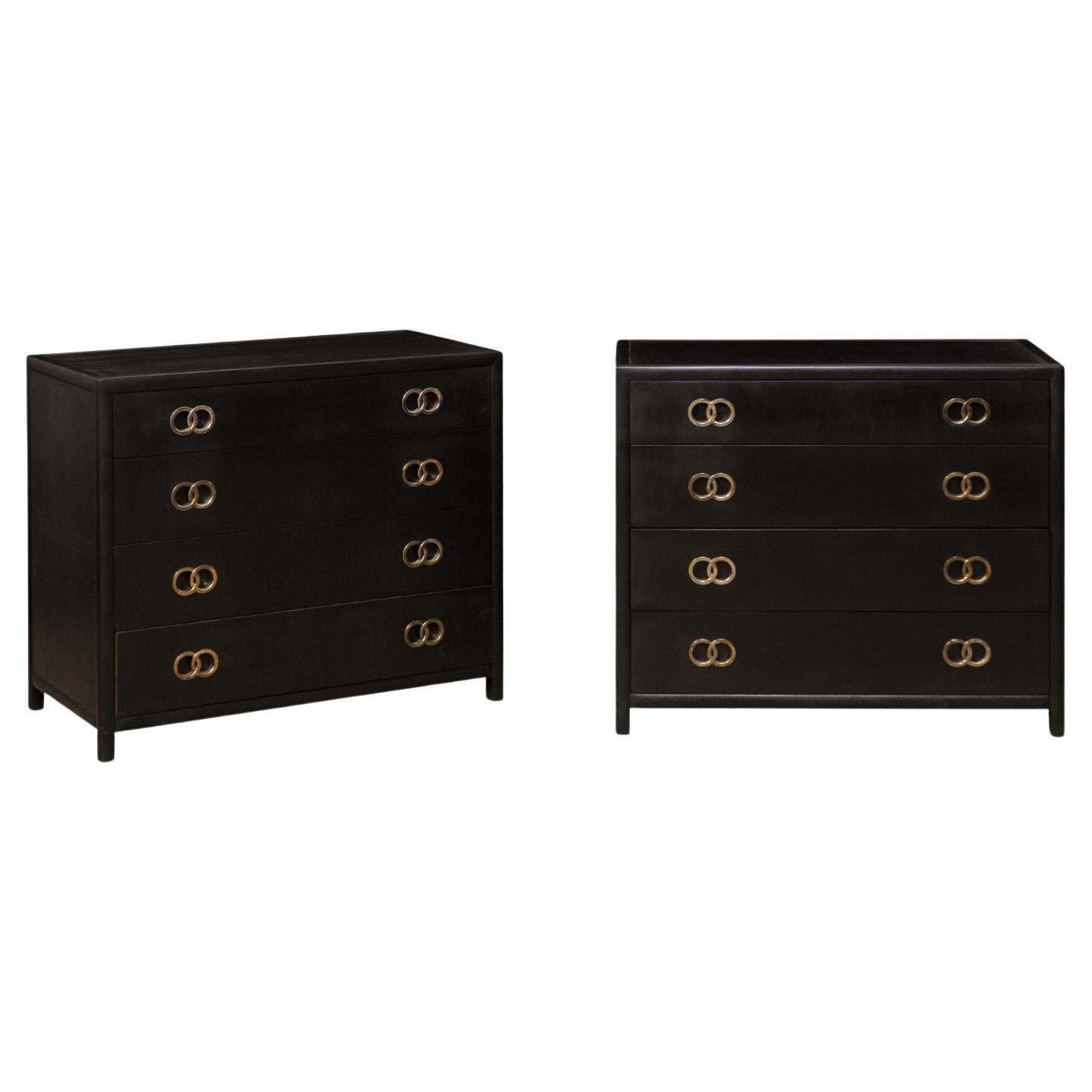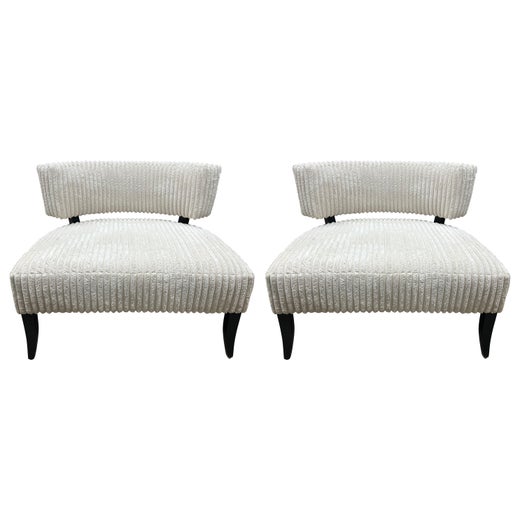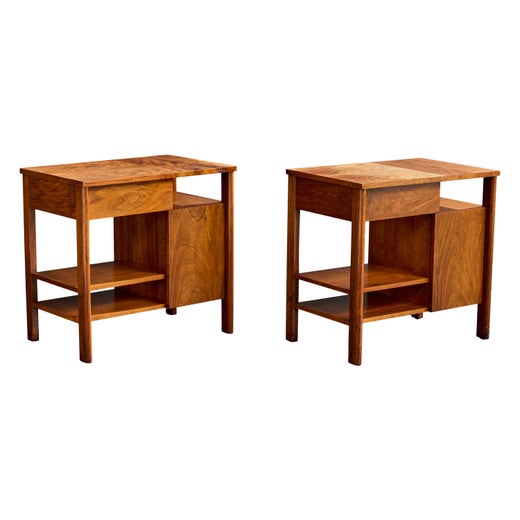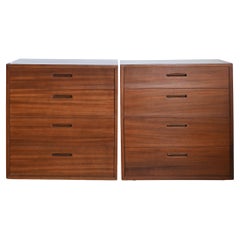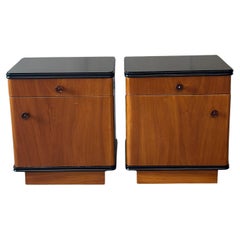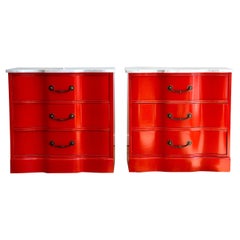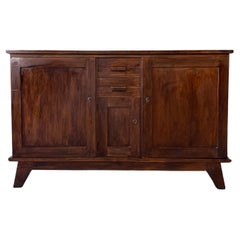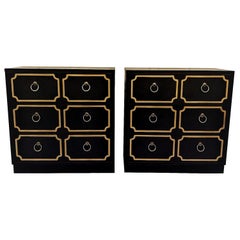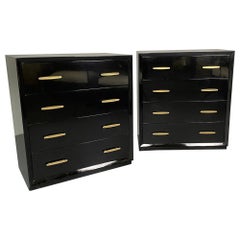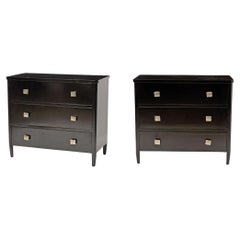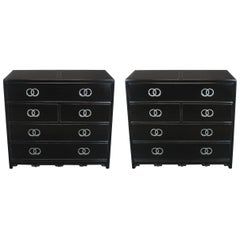James Mont for Widdicomb Black Chests of Drawers, a Pair
About the Item
- Creator:James Mont (Designer),John Widdicomb (Cabinetmaker)
- Dimensions:Height: 32 in (81.28 cm)Width: 30 in (76.2 cm)Depth: 17 in (43.18 cm)
- Sold As:Set of 2
- Style:Hollywood Regency (Of the Period)
- Materials and Techniques:
- Place of Origin:
- Period:
- Date of Manufacture:Circa 1970
- Condition:Wear consistent with age and use.
- Seller Location:Hudson, NY
- Reference Number:1stDibs: LU9753241059502
James Mont
James Mont’s life as an unmistakably talented furniture designer and interior decorator could fill the pages of a best-selling novel or be reimagined as a Hollywood feature film. From the 1930s through the 1960s, Tinseltown’s glitterati and Manhattan’s Mafia underworld coveted his sofas, coffee tables and table lamps.
Mont was born Demetrios Pecintoglu in Istanbul, Turkey, in 1904 to a family of artists. He reportedly studied architecture and art in Spain and France, and during the 1920s, Mont immigrated with his family to the United States.
Mont and his family settled in New York, where he found work in a Brooklyn electrical supply shop. There he sold hardware and designed his own lighting fixtures. The latter caught the eye of a gangster named Frankie Yale, who commissioned him to refurnish his house. Mont’s opulent designs drew on Art Deco, Hollywood Regency and were occasionally marked by chinoiserie, then a very popular trend in decorating. He created the kind of low-profile side tables and sofas that are frequently associated with mid-century modernism, and he is credited today with helping popularize the integration of Asian influences in modern American design.
Mont soon attracted New York City’s most infamous crime bosses, including Charles “Lucky” Luciano and Frank Costello. For a range of mobsters, he created fashionable, functional and sophisticated pieces such as collapsible home bars that would fold down and out of view — a particularly convenient feature during Prohibition — and tables and desks with secret drawers, which were also handy to Mont’s shady clientele.
“You bought a bar from him, and he would also deliver booze in a baby carriage,” antiques dealer and furniture retailer Todd Merrill told New York about Mont in 2008.
Mont designed a room for the World’s Fair in 1939 and later befriended Hollywood celebrities such as Bob Hope, who was best man at his wedding, Irving Berlin and Lana Turner. During the 1940s and ‘50s, Mont continued designing furniture, mastering finishing techniques such as lacquering and incorporating a distinctive “leafing” print effect with silver and gold into his pieces.
Mont’s designs enjoyed a resurgence in the 1990s, and his pieces continue to be sought after by collectors.
On 1stDibs, discover a range of vintage James Mont sideboards, tables and storage cabinets.
John Widdicomb
In the Widdicomb family, furniture ran in the blood. Furniture maker George Widdicomb emigrated from England to the United States in 1845, eventually setting up a cabinet shop in Syracuse, New York, before moving west to Grand Rapids, Michigan. There, he opened a shop with his four sons, including John Widdicomb, whose name would help carry the family legacy into the 20th century.
A wealth of pine and oak forests rendered Grand Rapids a logging center during the 1800s, and it eventually gained recognition for its furniture industry. The city became a destination for furniture makers who hailed from across the United States and beyond. The Widdicomb shop in Grand Rapids prospered, as the patriarch’s formal English training allowed him to produce pieces with superior craftsmanship compared to those of his competitors. Although the Civil War halted business and took the life of one of the Widdicomb brothers, the family’s survivors would start anew as Widdicomb Brothers and Richards, soon renamed the Widdicomb Furniture Company.
John Widdicomb, however, split from the family business in 1897 to create the John Widdicomb Company, where he would go on to focus on Louis XV- and French Provincial-style furnishings. Chairs made in these styles have distinct characteristics, such as floral motifs carved in the frames and gently angled backrests. John's company also remained a family affair: The founder’s son, Harry, assumed control of the company when his father died in 1910, while John's nephew Ralph Widdicombe — who retained the English spelling of his last name and joined the John Widdicomb Company at its start — designed every single piece of the offerings at his uncle's manufacturing outfit until he retired in 1951. Ralph was an internationally distinguished furniture designer whose modern mahogany bedroom suite won first prize at the Paris Exposition in 1900.
The original iteration of Widdicomb, which was helmed by John's older brother William while John ran his own brand, had shifted from making period revival styles of furniture, such as Georgian and Chippendale, to manufacturing modern pieces in the late 1920s. Admirers of mid-century modern furnishings likely recognize Widdicomb for the partnerships with iconic designers such as Frank Lloyd Wright, T.H. Robsjohn-Gibbings and Mario Buatta. In 1959, master woodworker George Nakashima created his Origins collection for Widdicomb when the firm merged with Mueller Furniture Corporation and was known, for around 10 years, as Widdicomb-Mueller. Origins, a revered Shaker-influenced group of nightstands, upholstered lounge chairs, dining-room tables and more, saw Nakashima working with woods like Carpathian elm and laurel in his Pennsylvania studio.
Eventually, the two Widdicomb companies would combine in 1970, operating under the name John Widdicomb Co.
In 2002, the business closed after more than a century of operations, and its assets were acquired by Stickley Furniture. Interestingly, it was not the first time Widdicomb and Stickley overlapped: In the final years of the 19th century, the companies opened a shared storehouse in London, while John Widdicomb and Albert Stickley would travel Europe together for the purposes of research.
Today, Stickley continues to produce John Widdicomb Company furniture, including French, Italian, English and Russian reproductions, as well as modern works from the first half of the 20th century.
Find vintage John Widdicomb bedroom furniture, tables, case pieces and more on 1stDibs.
- ShippingRetrieving quote...Shipping from: Coxsackie, NY
- Return Policy
More From This Seller
View AllMid-20th Century American Mid-Century Modern Commodes and Chests of Drawers
Wood, Mahogany
Mid-20th Century Czech Art Deco Cabinets
Maple, Burl
Vintage 1940s Unknown Federal Commodes and Chests of Drawers
Carrara Marble
Mid-20th Century French Art Deco Sideboards
Oak
Mid-20th Century Italian Mid-Century Modern Sideboards
Teak
Vintage 1950s French Mid-Century Modern Sideboards
Wood
You May Also Like
Late 20th Century American Hollywood Regency Commodes and Chests of Drawers
Wood
Late 20th Century American Hollywood Regency Commodes and Chests of Drawers
Wood
20th Century Art Deco Commodes and Chests of Drawers
Lacquer
Vintage 1950s American Commodes and Chests of Drawers
Silver Leaf
Vintage 1950s American Hollywood Regency Commodes and Chests of Drawers
Brass
20th Century American Commodes and Chests of Drawers
Wood
